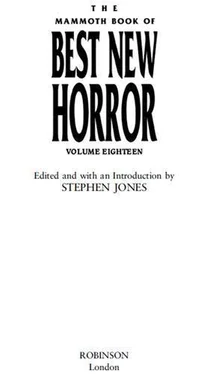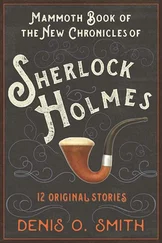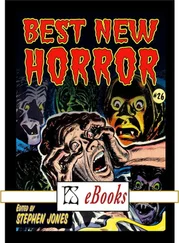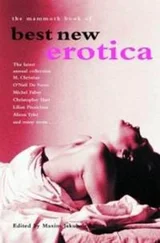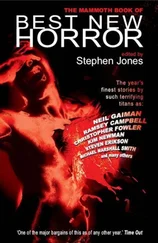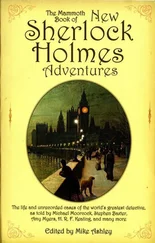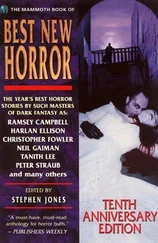Stephen (ed.) - The Mammoth Book of Best New Horror 18
Здесь есть возможность читать онлайн «Stephen (ed.) - The Mammoth Book of Best New Horror 18» весь текст электронной книги совершенно бесплатно (целиком полную версию без сокращений). В некоторых случаях можно слушать аудио, скачать через торрент в формате fb2 и присутствует краткое содержание. Жанр: Старинная литература, на английском языке. Описание произведения, (предисловие) а так же отзывы посетителей доступны на портале библиотеки ЛибКат.
- Название:The Mammoth Book of Best New Horror 18
- Автор:
- Жанр:
- Год:неизвестен
- ISBN:нет данных
- Рейтинг книги:3 / 5. Голосов: 1
-
Избранное:Добавить в избранное
- Отзывы:
-
Ваша оценка:
- 60
- 1
- 2
- 3
- 4
- 5
The Mammoth Book of Best New Horror 18: краткое содержание, описание и аннотация
Предлагаем к чтению аннотацию, описание, краткое содержание или предисловие (зависит от того, что написал сам автор книги «The Mammoth Book of Best New Horror 18»). Если вы не нашли необходимую информацию о книге — напишите в комментариях, мы постараемся отыскать её.
The Mammoth Book of Best New Horror 18 — читать онлайн бесплатно полную книгу (весь текст) целиком
Ниже представлен текст книги, разбитый по страницам. Система сохранения места последней прочитанной страницы, позволяет с удобством читать онлайн бесплатно книгу «The Mammoth Book of Best New Horror 18», без необходимости каждый раз заново искать на чём Вы остановились. Поставьте закладку, и сможете в любой момент перейти на страницу, на которой закончили чтение.
Интервал:
Закладка:
An exact fac-simile of the Richmond street directory could be transcribed from my life’s ordeals. At age eleven, I attended school in the upper room of Doctor Leroy’s store at Broad and Fifth Streets, where I learnt Ovid, Cicero and Xenophon. Aged thirteen, I played hoops and bandy in the gutters at Fourteenth Street and Tobacco Alley. After a quarrel with my foster father, I briefly lodged with his business partner Charles Ellis, in that gentleman’s house on the linden square, at the south side of Franklin Street between First and Second.
Richmond clutches to me still, like a suckling leech that will not relinquish its prey. I have lived elsewhere – Baltimore, West Point, South Carolina, even London – yet it is incessantly to Richmond that my blood returns, drawing me along as if by Mesmer’s animal magnetism.
In 1824 – when I was fifteen years of age – my paternal grandfather’s distinguished war record fetched me a place in the junior Morgan Riflemen, where I served as a member of the honour guard at Richmond’s Capitol Square, during the grand reception for the triumphal return of the Marquis de Lafayette. That noble Frenchman shook my hand before the vast assemblage, and in the presence of the throng he praised my grandfather whom I had never known: the war hero whose son was my cowardly father, the scoundrel who abandoned my mother.
I deem, then, that my credentials as a resident of Richmond are satisfactory. This city and I are in each other’s pocket. If I unbosom myself in these pages, it is Richmond’s dark soul as well as my own that gains the shrift of my confession.
Last summer, at twenty-six years of age and unable to sustain my mortal needs by the craft of my pen and inkwell, I took employment in a brickyard in West Fayette Street in Baltimore, at the firm of the partners Merryman & Young – although neither partner was a merry man, and most assuredly neither was young. During my unsupervised hours at the brickyard, while my employers thought me engaged in the urgent task of distinguishing one brick from another, I discreetly penned several poems and trifles which Mr Thomas Willis White of Richmond saw fit to publish in his Southern Literary Messenger . I make bold to say that my efforts were met with immoderate success. In October of last year, I returned to Richmond and took up my new position as chief reviewer, proof-reader and unofficial editor of the selfsame Southern Literary Messenger . I took lodgings at Mrs Yarrington’s boarding-house, at the corner of Twelfth and Bank Streets, fronting the south side of Capitol Square. Mrs Yarrington keeps a most abstemious household, where intoxicating liquors are entirely forbidden. I have pledged to forsake all bottle-companions while I am her boarder.
Now the Automaton arrives. On a recent Tuesday morning – December 15, 1835 – I was at my editorial desk, reloading my inkwell for a fresh assault upon the barbarian squadrons, when Mr White came to my stool with that day’s edition of the Richmond Enquirer . He thrust his forefinger at one portion of the newsprint, and challenged me: “What do you make of this, Eddy?”
In the extreme lower corner of the leftmost column of the front page, I discerned this tiny “squib” advertisement:MAELZEL’S CONFLAGRATION OF MOSCOW, &c., – Now exhibiting at the Museum. – Exhibition every evening. Doors open at a quarter before 7 o’clock. Exhibition to commence at half past seven o’clock precisely.
And so forth. “Might be a few agate lines’ worth of story here, Eddy,” said White. “Saddle up Shank’s mare this evening, and go fetch a look.”
The Museum of Richmond stands at Franklin and Eighteenth Streets. I arrived promptly that evening, just lacking the quarter-hour of seven. The price of admission was fifty cents: one-twentieth of my weekly stipend at the Messenger . I paid this usury, and entered the portals.
The museum is gas-fitted, so the rooms were well-lighted. Most of the permanent exhibits are devoted to Richmond’s history, especially this city’s ordeals in the two British wars. In a glass bell-jar, a ragged headdress of turkey-cock’s feathers summarised the advanced civilisation of Virginia’s aboriginal inhabitants. A few keepsakes of Europe, China, and the slave-coast of Dahomey are exhibited as well.
The momentary chief attraction proved to be a sequence of tableaux and dioramas, crafted by one Johann Nepomuk Maelzel of Vienna, and now touring America. These images depicted the bloodied events of September 1812, when Russia’s capital city was put to the firebrands to thwart its capture by Bonaparte’s advancing legions. The singular architecturings of Moscow – Saint Basil’s Cathedral, and so forth – were displayed here in exquisite miniature.
The front seats of the Museum’s auditorium were reserved for children and their wet-nurses, although I have no notion as to why suckling babes would show interest in the atrocities of Bonaparte’s hordes. I took care to seat myself out of pabulum’s range, in the third row. A sheet of linen, as white and blank as foolscap, had been stretched upon the rear wall.
From behind a claret-coloured velvet curtain, Professor Maelzel stepped forth. He bowed, introducing himself to our assemblage and proclaiming his credentials. Speaking in stiff Teutonic accents, he announced himself as the inventor of the metronome and the panharmonicon, and vouched that he had been Beethoven’s teacher. Now there was a strong odour of the new-fashioned paraffin oil, as one of the professor’s attendants lighted a magic-lantern. The gas-jets were snuffed, and then the evening’s revels commenced.
The audience gasped in astonishment as the room erupted in flames. Then, of a sudden, their cries transmuted into applause as it was discerned that this was a conjuror’s illusion. By some ingenious means of projecting and amplification, Professor Maelzel had enlarged the image of a single candle-flame, and was projecting this upon the white screen confronting us. A further stage-effect made it appear that these flames were within the miniature buildings of Maezel’s simulacrum, rather than behind them . . . so that indeed it seemed as if the city of Moscow, represented in miniature, was engulfed in fire. I perceived that mirrors were involved in the illusion: flames are by nature asymmetrical in shape, and I saw at once that a certain asymmetry in the conflagration on the left side of the screen was precisely reversed, mirror-wise, in the conflagration to our right side.
In the darkness, a sound: Doom! Doom! An unseen war-drum began its mournful tattoo. (I had noticed a boy with a tom-tom lurking in the hall at my arrival.) There was a clangour of unseen bells. (I had noticed a second boy in the hallway as well.) To the steady impulse of the tocsin’s throb, a sudden phalanx of homun-culoids arose, and commenced marching through the burning streets of Moscow. They wore the dark blue uniforms of Bonaparte’s army. These soldiers, I observed, were some ingenious regiment of man-nikins: an army of automata , if you will, compelled by mainsprings and levers to parade in unison across the row of dioramas. A few other homunculi, dressed as Cossack peasants, emerged from the burning buildings and attempted to flee. The advancing rank of soldiers raised their miniature muskets and fired at these targets. There was a sharp sudden report, not precisely matching the instant of the gunfire. (No doubt due to a tardiness by the drummer-boy in the vestibule.) The miniature peasants fell. Behind them, the buildings of Moscow collapsed and were consumed in the flames.
In the flame-lit auditorium around me, the good citizens of Richmond applauded Moscow’s death . . . for one city’s tragedy is ever another city’s entertainment.
Читать дальшеИнтервал:
Закладка:
Похожие книги на «The Mammoth Book of Best New Horror 18»
Представляем Вашему вниманию похожие книги на «The Mammoth Book of Best New Horror 18» списком для выбора. Мы отобрали схожую по названию и смыслу литературу в надежде предоставить читателям больше вариантов отыскать новые, интересные, ещё непрочитанные произведения.
Обсуждение, отзывы о книге «The Mammoth Book of Best New Horror 18» и просто собственные мнения читателей. Оставьте ваши комментарии, напишите, что Вы думаете о произведении, его смысле или главных героях. Укажите что конкретно понравилось, а что нет, и почему Вы так считаете.
